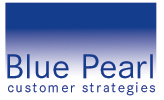We had a reader question about whether or not MSG (monosodium glutamate) is gluten-free. There is a lot of chatter on different sites about MSG, and MSG can come from a variety of sources like corn, sugar beets, molasses, and wheat. Many sources say that MSG in the US is rarely made from wheat today, or that the protein is distilled/process out of the end-product. However, I have no evidence or guarantee that the U.S. MSG is wheat-free and the purity of any distillation is also of some debate. Some people still react to distilled gluten-based grains in alcohols and vinegars, etc. Also, I double-checked with Kyra Bussanich, who, as an award-winning gluten-free pastry chef works closely with her ingredients and their sources. She said that MSG is something to beware of, in part because her own reaction to it mimics her reaction to gluten (as does mine), but mainly because there are food processors that use MSG as a flavoring. More importantly, even if the processor is a US company, they don't necessarily use US ingredients: she's worked in places that have sourced their ingredients from Asia, where the MSG may or may not be derived from wheat.
Whether derived from wheat or not, MSG does, however, cause reactions in many people such as nausea, headaches, lightheadedness and heart palpitations or heart rate changes. Though the FDA say it is a "safe when eaten at customary levels", and the European Union calls it a "food additive", enough people have an adverse reaction to it that is similar to an allergic reaction. It is best to avoid MSG, esp. if you have allergies to its source product, or a reaction to the MSG itself. As Kyra told me, "its better to be safe than sick!"
Also important to note - MSG, or more strictly, "glutamate" can be present in foods that have "natural flavor" in their ingredients. Aspertame, as well, can be included in the label, "natural ingredients." Since "natural ingredients" is a label that has many legal loopholes, it is one ingredient that is best to avoid. Put any food product that has this label back on the shelf.
Here are some ingredients that contain MSG in some form:
- Ajinomoto
- Any “hydrolyzed protein”
- Anything “…protein”
- Anything “hydrolyzed”
- Autolyzed Yeast
- Calcium Caseinate
- Calcium Glutamate
- Gelatin
- Glutamate
- Glutamic Acid
- Hydrolyzed Vegetable Protein
- Magnesium Glutamate
- Monoammonium Glutamate
- Monopotassium Glutamate
- Monosodium Glutamate
- Natrium Glutamate
- Sodium Caseinate
- Soy Protein
- Soy Protein Concentrate
- Soy Protein Isolate
- Textured Protein
- Textured Vegetable Protein
- Vetsin
- Whey Protein
- Whey Protein Concentrate
- Whey Protein Isolate
- Yeast Extract
- Yeast Food
- Yeast Nutrient
Protein powder contain many of these ingredients, especially whey proteins and often yeasts. There are very few protein powders out there that do not contain these types of ingredients. A good option is to find a gluten-free hemp protein powder, one that is not processed with any additives. Hemp is a complete protein.
There is a fantastic post from the Elephant Journal on this MSG Question as well. It contains a list of more labels & foods that could potentially contain MSG, plus much more information on this food additive. Read it here.
Thanks to our reader for this question!
~Elisabeth Veltman
Related Posts
Top 10 HIdden Sources for Holiday Gluten
Watch for Gluten in Tomato Sauces & Pastes
Most Surprising Place for Hidden Gluten
 Thursday, January 30, 2014 at 6:00AM
Thursday, January 30, 2014 at 6:00AM 




